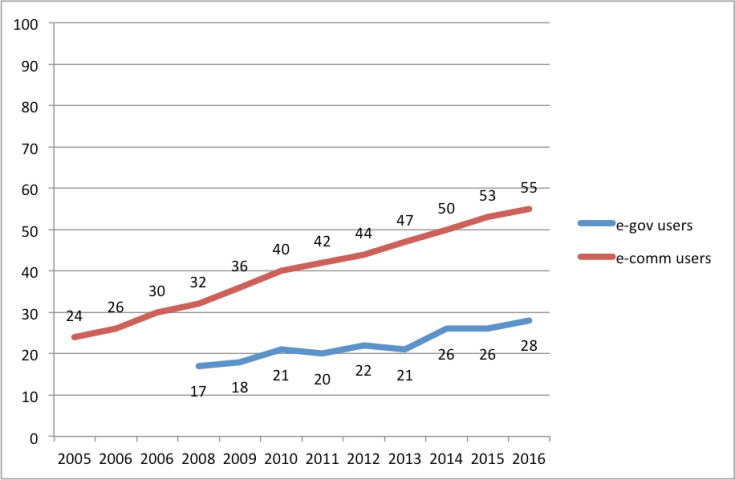70% of the market share in mobile.
What has changed since then in European e-government? A lot of progress has certainly been achieved – but is it enough?
On the bright side, many things have happened. The revised PSI directive introduced the “open data by default” principle; the eIDAS regulation set the standard for mutual recognition of ID across Europe; and the new European Interoperability Framework presents both a modern vision and an implementation roadmap. The “building blocks” architectural approach has been widely embraced and composable services such as eInvoicing, eDelivery, eSignature, eID, and eTranslation are already being deployed. Governments have deployed online services , and have started to bring in new skilled workers through “Digital Service Teams“.
Yet the results cannot be considered satisfactory if we take as a yardstick the objective of the Malmö declaration [pdf] of “services designed around user needs” and ·”seamless eGovernment services for the setting up and running of a business and for studying, working, residing and retiring anywhere in the European Union.”
Let us just take one example. Before Malmo, in 2008, 32 of Europeans out of 100 shopped online and 17 used government services – a 15 points gap. Today, 55 shop online and 28 use government services – a 27 points gap. Europeans are today accustomed to “shop online first” but still consider using public services online as an exception. The gap has widened, and any person having used online public services knows that in general the usability leaves much room for improvement compared to private services. The only existing European seamless services are private.
Figure: Uptake of e-commerce and e-government in EU (Source: Eurostat)

To be clear, this is not the only problem – but a sign that e-government is not (yet) having the desired impact. And in our historical context marked by continuous decline in trust in government and the rise of populistic movements that threaten free trade, democracy and ultimately peace, we simply cannot afford it.
So what are the underlying reasons for this limited impact? We see different progress with regard to design, implementation and deployment.
In terms of design, the progress is remarkable. We moved from an obsession towards online service delivery to a more balanced approach between front and back office. The strategic approach has moved from monolithic systems to open, composable building blocks. The vision set out in Malmö and deployed with the eGovernment Action Plan remains valid and it is now accompanied by the European Interoperability Framework 2.0 – an impressive document worth reading.
In terms of implementation , the progress is patchy. The building blocks are being delivered successfully. Implementation of PSI directive is practically complete by all MS, while for eIDAS it’s still at an early stage. The EIF implementation is still partial. Overall, there are some excellent, truly end-to-end services and some very advanced countries, but the landscape is very diverse and unequal.
In terms of deployment, the progress is insufficient. Governments show a limited capacity for engagement of key stakeholders across the value chain: other administration levels implementing interoperability guidelines, stewards of base registries publishing data in standard format, private service providers using building blocks, developers reusing open government data, citizens using public services. What we need is a truly end-to-end digital government experience, that can only be achieved by involving all relevant parties from the early design phase.
We need to bring all stakeholders together under a common vision, and infuse renewed energy into innovation in government. This is why we need a new EU ministerial declaration.
On behalf of the Estonian government, the Lisbon Council has presented some initial proposals for discussion.
Now it’s your time to speak. Do you agree? What is missing?
Comment our proposals, let European Member State know what you think.
We all need a better digital government – let us know how we get it.